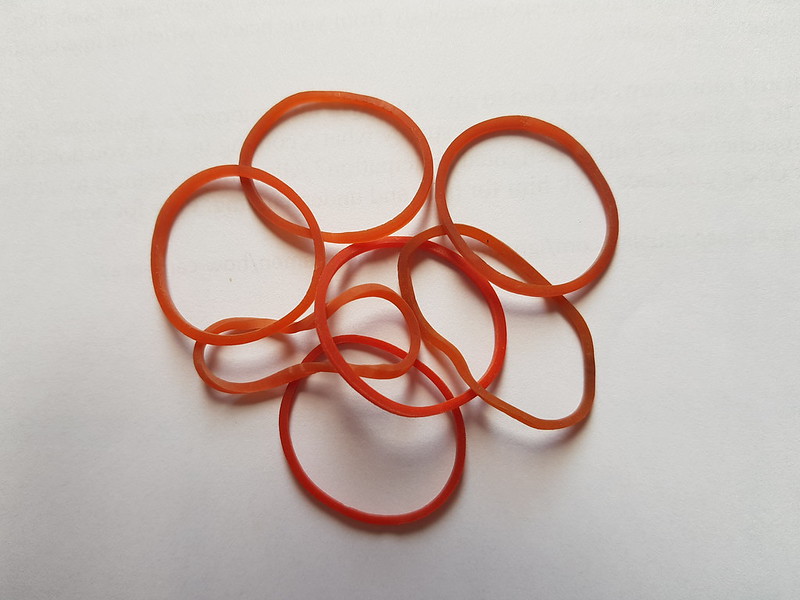 |
| Red Rubber Bands |
I remember buying these red ones during our first year in Bangkok. I was needing to get some rubber bands, and our Thai skills at that point were very limited. I had to look up the term in our phonetic dictionary so I would know how to ask for them. Turns out the word for rubber, yang (ยาง), is used not just for the product itself but for things made from it.
I figured that the best place to buy them would be at a dry goods store not too far from our apartment building. The street just north of us was lined with small shops and the street itself was a bustling market in the evenings..
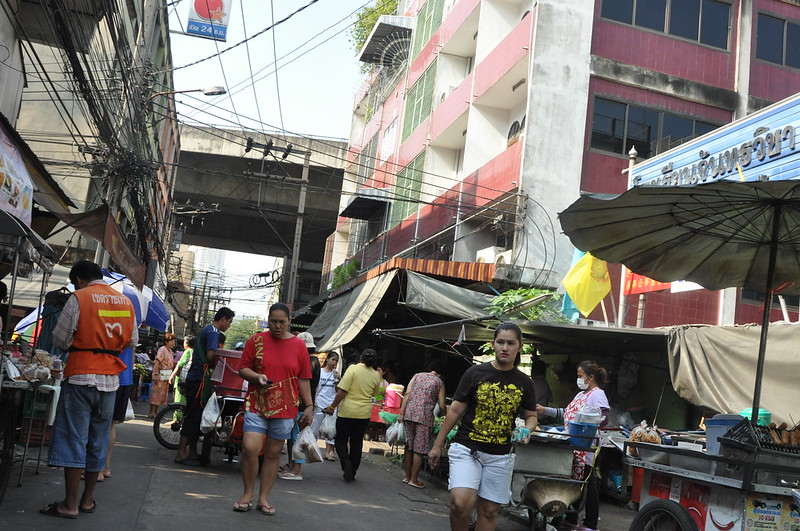 |
| Market Street Near Our Apartment Surely There is a Place that Sells Rubber Bands Near Here |
When I walked into the store, there appeared to be a discussion among the proprietor and his children as to would would be the one to have to talk with the foreigner. The teenage daughter lost, perhaps because she had the best English skills, and so came to help me. I had no idea how rubber bands were sold, as there were none on display. My experience in the US was that they would be in plastic bags either of the same size or assorted sizes.
I was wrong.
Turns out rubber bands were sold by the kilogram, and I can't imagine how many that would be, but it must be a lot and I only needed a couple. We had learned the word for a tenth of a kilogram in language school, so I figured I would just ask for that. How many is that? Enough to last us our entire stay in Thailand, so it seems, since we are still using the same stock 11 years later.
Why such high demand for rubber bands? Turns out that everything in Thailand seems to be packaged in plastic bags and the bags are sealed not with twist ties, but with rubber bands. Part of this is due to the fact that rubber is produced locally and there is usually more latex than meets demand, so the price is cheap. The Thai people are very adept at tying plastic bags with rubber bands and they have a technique they use, which is hard to learn from watching because they do it so fast. Later that year we participated in helping package food for flood victims in Bangkok, so we got to try our hand at it (we weren't very adept).
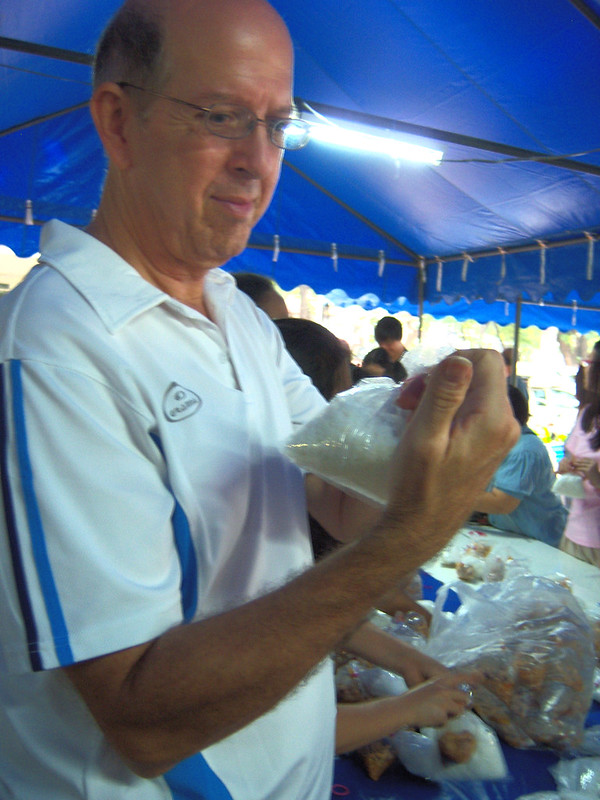 |
| Showing Off my Lack of Skills Tying With Rubber Bands |
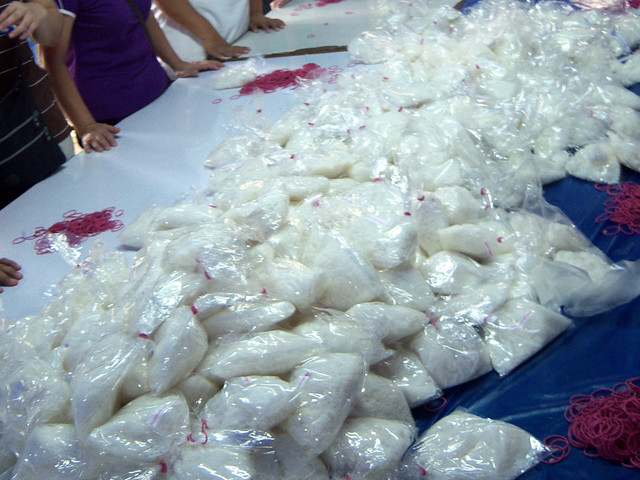 |
| Rice and Lots of Red Rubber Bands |
Even though rubber bands are used extensively to package food, when you shop for rubber bands, you want to make sure you don't ask for "hygienic rubber." Hygienic rubber is used to cover certain parts of the anatomy during certain activities.
As I mentioned before, rubber is produced locally. However, rubber trees are not native to Southeast Asia, though they are planted extensively in the region. Rubber trees, also known as Para Rubber, (Hevea brasiliensis) are native to the Amazon rain forest. There are already several native trees that go by the name yang (rubber). These are all species of Dipterocarpus, known in English as dipterocarp trees or resin trees. Dipterocarps have resin that can be used for wood lacquers and waterproofing boats, among other things.
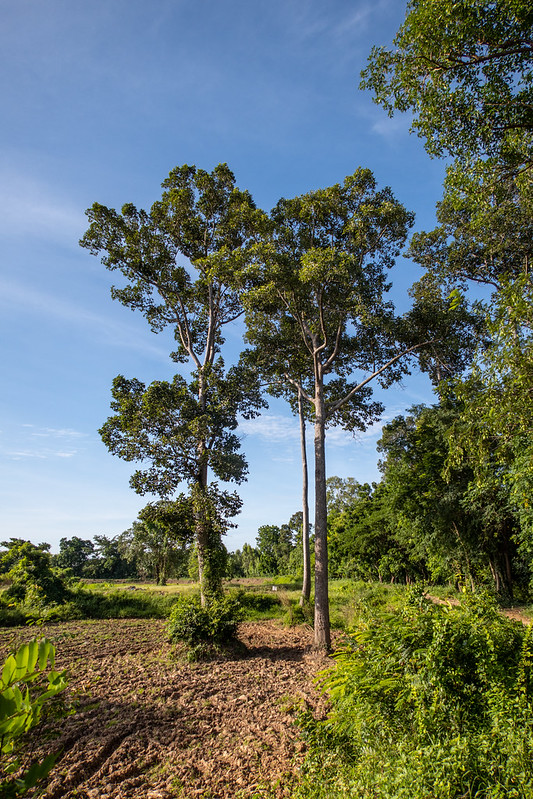 |
| Resin Trees (ยางนา Dipterocarpus alatus). Dipterocarp Trees are among the tallest locally |
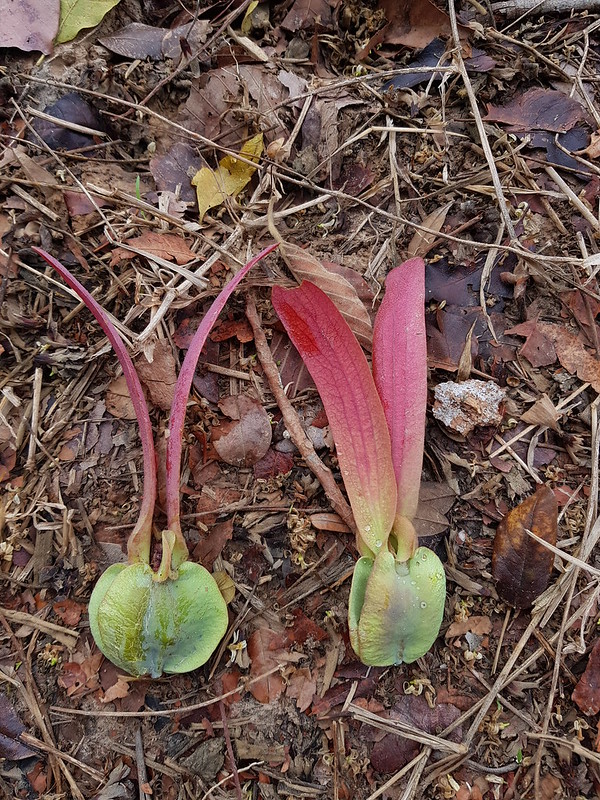 |
| Dipterocarp Seeds have wings and you can throw them in the air to watch them helicopter |
Para rubber trees, on the other hand, are called yang para (ยางพารา). They are grown in plantations, which end up having a tightly closed canopy when they mature. In some parts of Thailand, these are the only shady forests you can find.
 |
| Dirt Road Through the Rubber Plantation |
The trees are tapped by etching into the bark on one half of the tree trunk. The latex is collected in black plastic cups—it takes about two days for the cup to fill.

With time, the scar from the tapping takes up a good portion of the trunk. The tap is then switched to the other side.
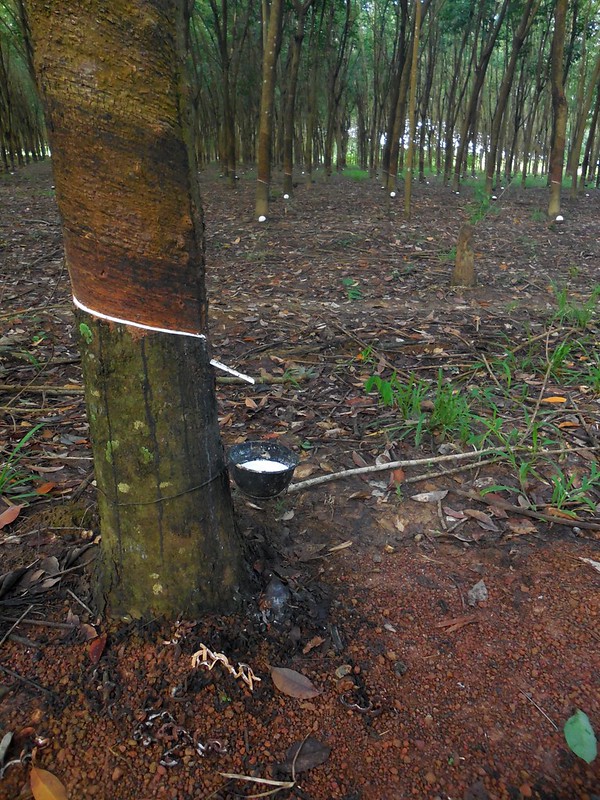
When the cups are full, a chemical is added to make the latex turn firm. The cups are emptied onto the ground for later collection.
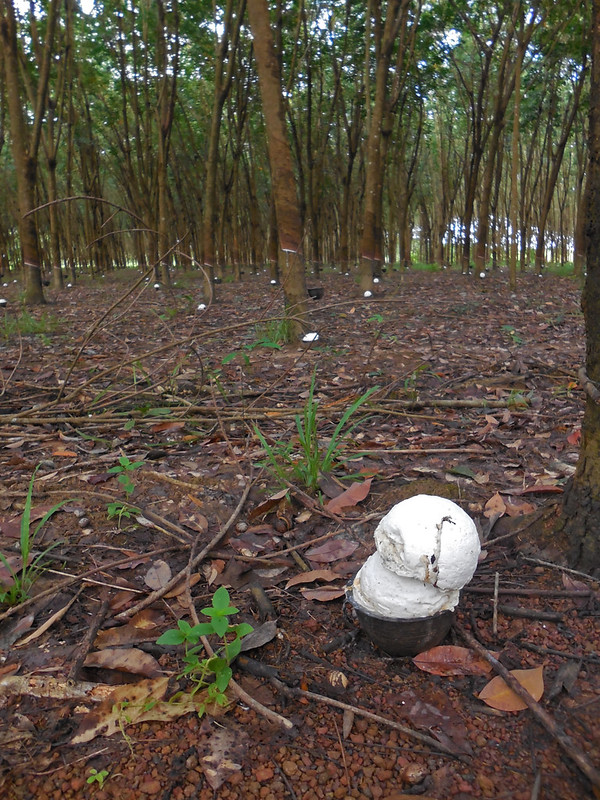 |
| Rubber Latex Gel |
The latex with the added chemicals has a very strong odor. The smell is particularly strong at the places where farmers sell their latex to others who will haul it to a processing plant. The small reminds me of the odor that comes off trucks that would haul treated sewage from treatment centers to farm fields.
 |
| Rubber Latex Collection Point |
Growing rubber trees is not a really lucrative business. Many years, the income barely covers expenses. The government is constantly researching new ways to use the latex in order to increase demand and hence the income for rubber farms. Many people, though, are turning their rubber trees into charcoal and planting something else instead.
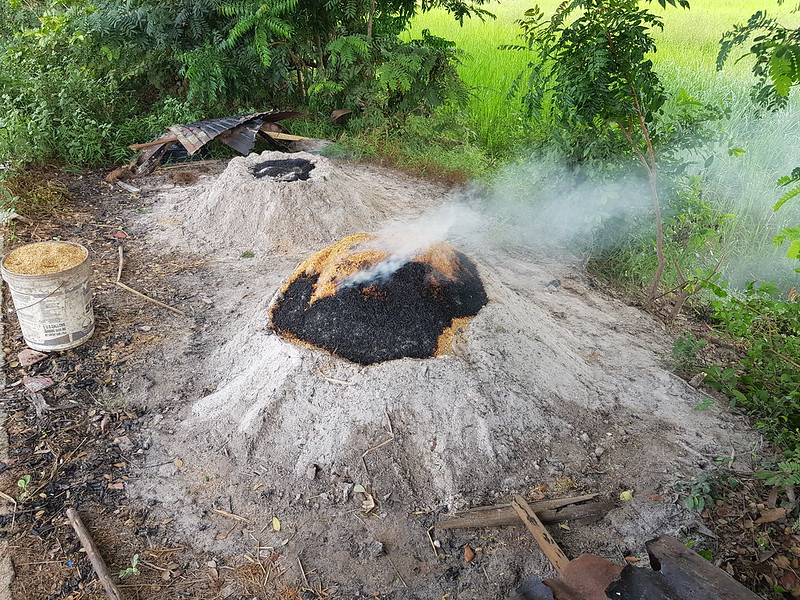 |
| Turning Trees into Charcoal |
Another challenge related to rubber, is what to do with waste rubber bands. At lot of rubber and plastic trash ends up in storms drains that flow to the rivers that then flow to the ocean. I remember being at the coast following a major storm; there was a wall of debris at the high tide level. Much of the debris was organic in nature (logs and stumps, etc.) but what we mostly saw were plastic bags, plastic straws and rubber bands.
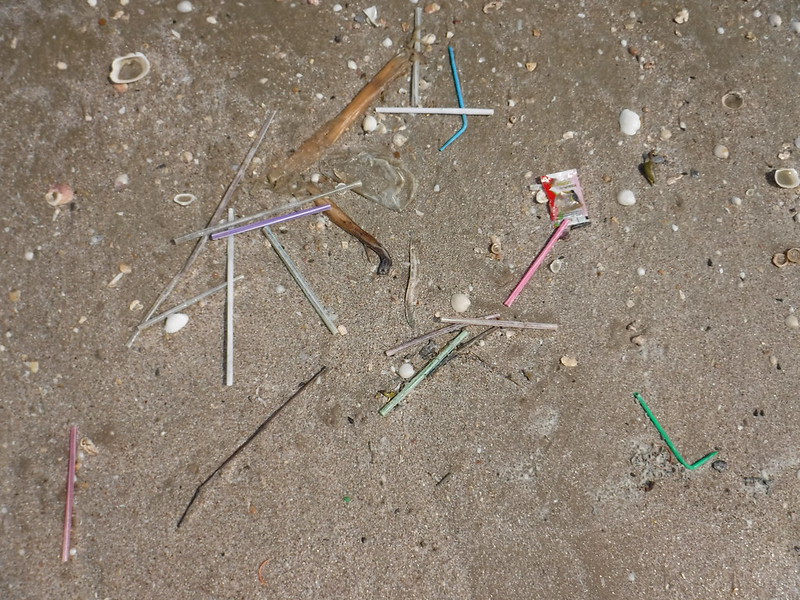 |
| Drinking Straws Washed up on the Beach |
Rubber and latex are things we tend to take for granted, without realizing what is involved in getting these materials to market in the forms we use everyday. So, next time you grab for a simple rubber band, or slide on a latex glove, give thanks for the farmers that labor so that you night have that simple convenience.
